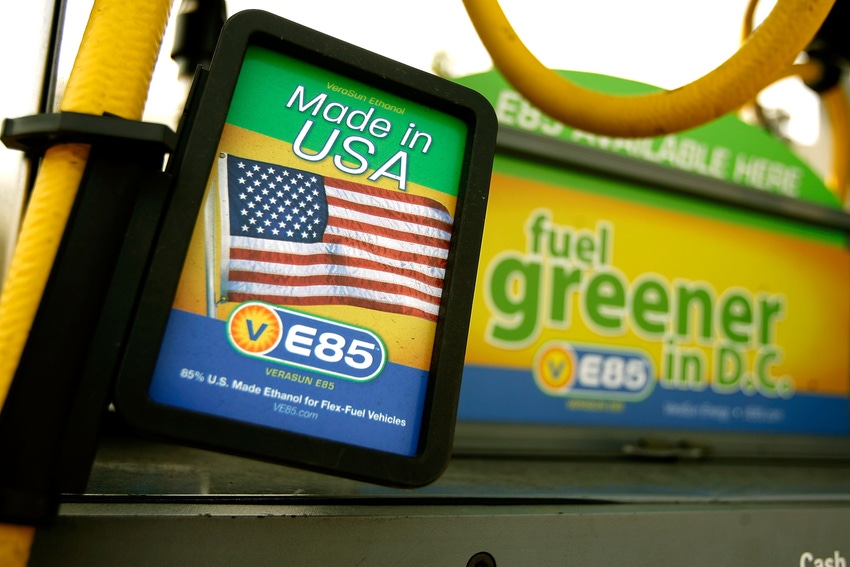
Note: This article is part four in a series of articles describing some of the hedging blunders I have seen over the years. By definition, a hedge is a market position in a market off-set by opposite position in different market. Often, what starts out as market risk reduction program becomes a very high stakes speculation position.
VeraSun Energy was formed in 2001 to make a profit by producing ethanol and DDGs. It was the first branded E85 and the first ethanol producer to form alliances with the automobile industry for E85 engines. On June 14, 2006, VeraSun became the first ethanol producer to take its stock public. By July 2007, VeraSun's production capacity was more than 650 million US gallons per year.
In June of 2008, to say VeraSun was a shaker and mover in the ethanol business would be a gross understatement. They filed for bankruptcy by October 31. VeraSun's financial demise was the result of a hedging blunder.
Marketing plan crash
VeraSun’s business model was to buy corn every day and sell ethanol and DDGs every day. Therefore, the average price they paid for corn and the average price received for the products would be the average price for the year. To be profitable, all they had to do was produce ethanol more efficiently than their competition, which they did quite easily.
The second week of June, December futures traded over $7.75 after gaining a dollar and half the previous two weeks due to weather. The marketing plan was changed, and I am sure there was an element of panic involved. The decision to change the market plan may have been from the board of directors, VeraSun’s banker or the CEO. I would expect all of them were involved in the decision.
After years of buying corn only in the cash market on a “as needed” basis, VeraSun decided to buy six months’ worth of corn in the futures market to hedge the input cost of their corn. The day they bought millions of bushels of corn was the day the high for the year (and four more years) was made. December corn traded to $7.99¼ on June 27 and settled that day at $7.87, down one cent for the day.
VeraSun locked-in the futures price at a discount to current futures price. How did they do that and why was that a bad thing?
They wrote (sold before they bought) put options, received the premium, which reduced the net price of the corn by the premium amount. The writer of a put option (VeraSun) was giving the buyer of the put the right to sell corn at the strike price of the put option. If the corn price goes down, of course the buyer of the put wants to sell at the higher price of the put option. Who had to buy the corn futures in this case? VeraSun!
The day after the transaction was made, December corn was down the 30 cent limit. Less than two weeks later, December corn traded down to $5.04 on its way to $2.90 late that fall. Suddenly, VeraSun had to buy double the number of bushels they had bought with futures contracts. It was an accumulator contract in reverse.
Marketing mistakes to learn from
VeraSun made several mistakes that some farmers also make:
Never change your market plan when you are scared. If you must do something, buy options, never establish a futures position or sell cash grain when you are scared.
Hedge the input cost but not the output value. If VeraSun had also sold the futures to hedge the production of ethanol and DDGs, their loss in the long corn hedge would have been offset by the gain with the short DDG and ethanol hedges. I am asked every day by farmers, “Should I price 2023 crops?” No, not until the input costs are known.
Not only did VeraSun not understand how a hedge worked, their banker didn’t either or he would have insisted they hedge their production at the same time the input cost was hedged. Worse yet, neither of them understood how an accumulator contract worked.
The seasonal price trend of corn peaks in late June. Corn futures had never been above $4.35 before 2008. Never buy anything at the highest price ever seen when the seasonal price is expected to be at the top for the year.
The corn crop is made or lost in July, not June. It rained the first of July.
The decision makers did not know the economic cardinal rule: In the long run, in a supply and demand market, the average price paid for a product equals the average cost of production. That is why we say the best cure for high prices is high prices and the best cure for low prices is low prices. Since the cost of production in 2008 was less than $3.5, the price corn would decline, drought or no drought.
When the hedge obviously became a mistake, no corrective action was taken. The long corn position could have been liquidated with a loss or they could have hedged the products, either of which would have saved the company.
Economies around the world were contracting due to the “Great Recession.” VeraSun decision makers had blinders on and did not see the price of everything (except crops) the first half of 2008 were in rapid decline. When the dry weather ended, the potential grain supply problem ended. US corn production was down 7% in 2008 and the average price paid to farmers was $4.08. Truly, VeraSun corn hedge was one of the great hedge blunders of all time.
Wright is an Ohio-based grain marketing consultant. Contact him at (937) 605-1061 or [email protected]. Read more insights at www.wrightonthemarket.com.
No one associated with Wright on the Market is a cash grain broker nor a futures market broker. All information presented is researched and believed to be true and correct, but nothing is 100% in this business.
The opinions of the author are not necessarily those of Farm Futures or Farm Progress.
About the Author(s)
You May Also Like






